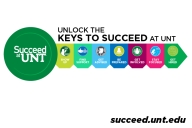You have /5 articles left.
Sign up for a free account or log in.
We could all use a friendly game of Ping-Pong to de-stress once in a while, especially when we’re juggling three or four classes, a part-time job, extracurriculars and media stimulation.
Today’s college students are more stressed out and career-minded than ever, and anxiety has become the leading mental health issue among them. On the campus of Wake Forest University, Provost Rogan Kersh could see why, at least in part: students never take time to relax. They run from class to meeting to practice, describing everything they have to do as “work” or “an obligation.” Even penciling in time to hang out with roommates has become the norm.
At Wake Forest – where the notion of educating the “whole student” (mind, body and spirit) – is paramount, this intersection of patterns called for intervention. Passive intervention.
Wake Forest hired Dan Biederman, who runs the firm that redeveloped New York City’s Bryant Park, to come in and figure out how to liven up the public space to resemble something more of a park and less of a campus quad. Biederman did so through interviews, observation and experiments. Visit Wake Forest now, and you’ll find movable tables (there aren't too many, so students tend to congregate), benches, board games, outdoor classrooms and even a piano scattered throughout a couple of large areas across campus. Nobody told the students, faculty or staff it was happening; they just hoped it would grow organically into a shared space people would actually want to use.
“We really are aiming to not transform their lives with a capital T, but in a very unobtrusive way introduce elements that aren’t announced, aren’t planned, aren’t programmed, aren’t another thing they have to do,” Kersh said, looking outside his office window to see a Ping-Pong table in use and students and faculty sharing benches, with not a phone in sight (though he admitted that’s not always the case). “They’re just there, and the idea is they just have to be."
The immediate goal is just to get students out of their own heads a little bit, take spontaneous breaks from their routines, replace that lunch-on-the-go with a quick sit-down and some self-reflection time, or lay off the text messaging and actually have a one-on-one conversation or round of Yahtzee with someone. The equipment stays outside 24/7.
But the project is only one step toward a larger, more long-term goal: gauging and improving students’ general well-being and measuring the relationship between a healthy “whole person” and a thriving campus community. The work on the plaza is the beginning of a Wake Forest initiative that officials hope will do just that. The rest will involve polling with Gallup to measure student well-being – and eventually figure out what effect this has on students; hiring a director of student well-being; and trying out other pilot projects in spontaneity.
“We worry about binge drinking and mindless partying and the whole 'work hard, play hard' mentality,” Kersh said -- not just of Wake Forest, but of colleges generally. “It feels as if our responsibility to these students does not stop at the classroom door, and so this notion of educating the whole person feels pretty necessary.” (Or it does not stop at the doormat, in the case of the two new outdoor, completely unenclosed classrooms on the plaza. Faculty can reserve the spaces for classes, but they’re also free at times, for students studying solo or a class that convinces the professor to lecture out in the sun.)
Kersh hopes the initiative will instill habits in students that will keep them healthy, happy and self-reflective long after they leave college.
Jessica Blackburn, a senior studying biology at Wake Forest, said the centrality of the space draws students in, and while she mostly just hangs out with people she already knows there, people will likely start forming new friendships once the weather picks up.
“I think this is a very good thing for student mental health, because it’s so easy to just get in the mindset of, ‘I have all these things to get done,’ ” Blackburn said. “All of these spaces are a reminder just to hang out with people and relax, and focus on community and take a little break from your work, which is really important if you don’t want to burn out.”
Presenting new research last month at the annual convention of NASPA: Student Affairs Administrators in Higher Education, Victor Greto, associate professor of media arts at Wesley College, suggested that students’ overuse of cell phones and other invasive social media technologies may be contributing to that anxiety. At that meeting, educators and administrators discussed ways to get students to unplug a bit, and judging by the tone of the many comments, this is something on their minds.
Greto said Wake Forest’s new public spaces are “great.”
“Anything that encourages face-to-face anything is a good idea,” he said. “We do know that people’s reliance on cell phones and technology are certainly potentially negative in terms of their anxiety and ego control. The less obsessed they are about it, the better it’s going to be, and if colleges can provide something like this, that’s a good thing.”
But could the project actually serve to distract students from all the work that they do need to do? Blackburn was walking to the library the other day to do her routine studying when she ran into two friends at the tables and sat down to talk. As for the studying – it got done, just 20 minutes (and a lunch) later than planned.








